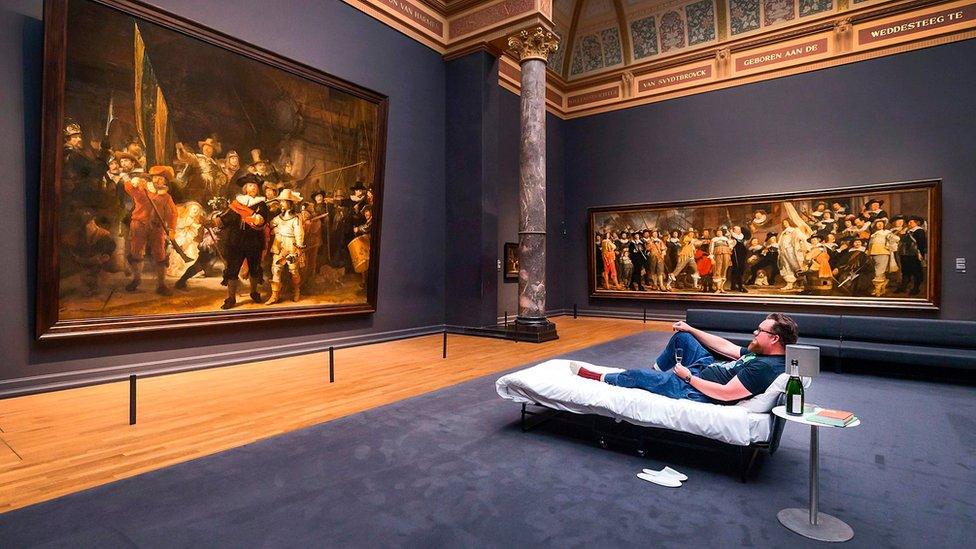Rembrandt: Rijksmuseum begins live Night Watch restoration
- Published
The historic restoration of Rembrandt's The Night Watch
An Amsterdam museum has begun the biggest ever restoration of Rembrandt's famous painting The Night Watch and is inviting people to watch live.
The masterpiece, created in 1642, has been placed inside a specially designed glass chamber so that it can still be viewed while being restored.
Enthusiasts can follow the latest on the restoration work online, external.
The celebrated painting was last restored more than 40 years ago after it was slashed with a knife.
The Night Watch is considered Rembrandt's most ambitious work. It was commissioned by the mayor and leader of the civic guard of Amsterdam, Frans Banninck Cocq, who wanted a group portrait of his militia company.
The painting is nearly 4m tall and 4.5m wide (12.5 x 15 ft) and weighs 337kg (743lb). As well as being famous for its size, the painting is acclaimed for its use of dramatic lighting and movement.
But experts at Amsterdam's Rijksmuseum are concerned that aspects of the masterpiece are changing, pointing as an example to the blanching of the figure of a small dog. The museum said the multi-million euro research and restoration project under way would help staff gain a better understanding of the painting's condition.
"This detailed study is necessary to determine the best treatment plan, and will involve imaging techniques, high-resolution photography and highly advanced computer analysis," it said. "Using these and other methods, we will be able to form a very detailed picture of the painting - not only of the painted surface, but of each and every layer, from varnish to canvas."
Allow X content?
This article contains content provided by X. We ask for your permission before anything is loaded, as they may be using cookies and other technologies. You may want to read X’s cookie policy, external and privacy policy, external before accepting. To view this content choose ‘accept and continue’.

The project is the first major restoration of the work since 1975, when a man armed with a bread knife fought off a museum guard and slashed the painting, telling bystanders that he "did it for the Lord".
The piece was also attacked with a knife in 1911 and sprayed with a chemical in 1990, but only minor damage occurred on both occasions that was relatively easy to repair.
General Director Taco Dibbits said the museum decided to allow the public to view the project, dubbed Operation Night Watch, because the painting "belongs to us all".
"More than two and a half million people come and see it each year. It belongs to everybody who lives in the Netherlands, and the world. And we felt that the public has the right to see what happens to that painting," Mr Dibbits said at the launch on Monday.
- Published2 March 2019
- Published2 June 2017
